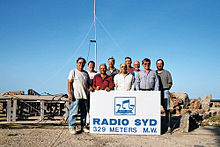
Kingman Reef is a largely submerged, uninhabited, triangle-shaped reef, geologically an atoll, 9.0 nmi (20 km) east-west and 4.5 nmi (8 km) north-south, in the North Pacific Ocean, roughly halfway between the Hawaiian Islands and American Samoa. It has an area of 3 hectares and is a unincorporated territory of the United States in Oceania. The reef is administered by the United States Fish and Wildlife Service as the Kingman Reef National Wildlife Refuge. It was claimed by the US in 1859, and later used briefly as stopover for commercial Pacific flying boat routes in the 1930s, until there was aircraft disaster with one of the flying boats serving the route. It was administered by the Navy from 1934 to 2000, and thereafter the Fish and Wildlife service. It has since become a marine protected area. In the 19th century it was noted as maritime hazard, earning the name Hazard Rocks, and is known to have been hit once in 1876. In the 21st century it has been noted for is marine biodiversity and remote nature.
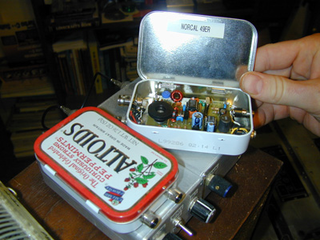
In amateur radio, QRP operation refers to transmitting at reduced power while attempting to maximize one's effective range. QRP operation is a specialized pursuit within the hobby that was first popularized in the early 1920s. QRP operators generally limit their transmitted RF output power to 5 W or less output for CW, or 10 W PEP output or less for SSB.
The American Radio Relay League (ARRL) is the largest membership association of amateur radio enthusiasts in the United States. ARRL is a non-profit organization, and was co-founded on April 6, 1914, by Hiram Percy Maxim and Clarence D. Tuska of Hartford, Connecticut. The ARRL represents the interests of amateur radio operators before federal regulatory bodies, provides technical advice and assistance to amateur radio enthusiasts, supports a number of educational programs and sponsors emergency communications service throughout the country. The ARRL has approximately 161,000 members. In addition to members in the US, the organization claims over 7,000 members in other countries. The ARRL publishes many books and a monthly membership journal called QST.
DXing, taken from DX, the telegraphic shorthand for "distance" or "distant", is the hobby of receiving and identifying distant radio or television signals, or making two-way radio contact with distant stations in amateur radio, citizens band radio or other two-way radio communications. Many DXers also attempt to obtain written verifications of reception or contact, sometimes referred to as "QSLs" or "veries".

Contesting is a competitive activity pursued by amateur radio operators. In a contest, an amateur radio station, which may be operated by an individual or a team, seeks to contact as many other amateur radio stations as possible in a given period of time and exchange information. Rules for each competition define the amateur radio bands, the mode of communication that may be used, and the kind of information that must be exchanged. The contacts made during the contest contribute to a score by which stations are ranked. Contest sponsors publish the results in magazines and on web sites.
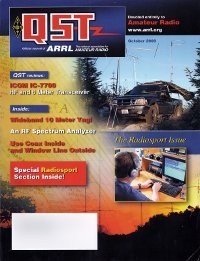
QST is a magazine for amateur radio enthusiasts, published by the American Radio Relay League (ARRL). It is a membership journal that is included with membership in the ARRL. The publisher claims that circulation of QST in the United States is higher than all other amateur radio-related publications in the United States combined. Although an exact number for circulation is not published by the American Radio Relay League, the organization claimed 158,238 members at the end of 2021, almost all of whom receive the magazine monthly, in addition to issues delivered to libraries and newsstands.

An amateur radio station is a radio station designed to provide radiocommunications in the amateur radio service for an amateur radio operator. Radio amateurs build and operate several types of amateur radio stations, including fixed ground stations, mobile stations, space stations, and temporary field stations. A slang term often used for an amateur station's location is the shack, named after the small enclosures added to the upperworks of naval ships to hold early radio equipment and batteries.

An amateur radio operating award is earned by an amateur radio operator for establishing two-way communication with other amateur radio stations. Awards are sponsored by national amateur radio societies, radio enthusiast magazines, or amateur radio clubs, and aim to promote activity on the amateur radio bands. Each award has its own set of rules and fees. Some awards require the amateur radio operator to have contacted other stations in a certain number of countries, Maidenhead grid locators, or counties. Because amateur radio operators are forbidden by regulation to accept financial compensation for their on-air activity, award recipients generally only receive a certificate, wooden plaque, or a small trophy as recognition of their award.

Amateur radio international reciprocal operating agreements permit amateur radio operators (hams) from one country to operate a station whilst traveling in another without the need to obtain additional licenses or permits.
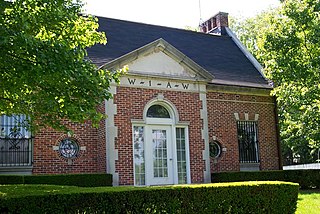
W1AW is both the amateur radio call sign and the primary operating station of the American Radio Relay League (ARRL). This station, which is commonly called the Hiram Percy Maxim Memorial Station, is located on the grounds of ARRL Headquarters in Newington, Connecticut. It was inspired by Maxim's 1AW callsign which predated the use of the AA-AL, K, N and W prefixes. The station routinely transmits bulletins and Morse code practice using common amateur radio frequencies. During a communications emergency bulletins are transmitted hourly in order to keep amateur radio operators informed.
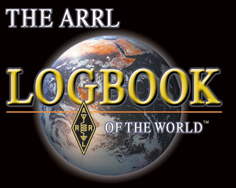
Logbook of the World (LoTW) is a web-accessed database provided by the American Radio Relay League (ARRL) to implement a contact verification service among amateur radio operators. Using LoTW, radio amateurs (hams) can claim and verify contacts (QSOs) made with other amateurs, generally for claiming credit for operating awards, such as DXCC. This kind of verification formerly required exchange of paper QSL cards and submission to ARRL, a slow and somewhat expensive process. LoTW began operation in 2003.
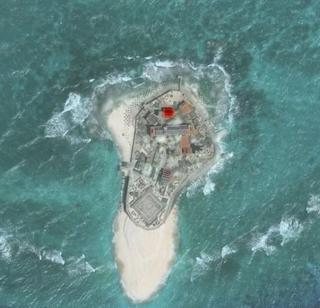
Amboyna Cay, also known as Vietnamese: Đảo An Bang; Malay: Pulau Amboyna Kecil; Datu Kalantiaw Island ; Mandarin Chinese: 安波沙洲; pinyin: Ānbō Shāzhōu, and other names, is an island of the Spratly Islands group in the South China Sea located just outside (SW) of the southwest of Dangerous Ground. It is SW of Barque Canada Reef, south of the London Reefs, and NW of Swallow Reef.
Call signs in the Middle East are unique identifiers for telecommunications and broadcasting in the Middle East. Call signs are regulated internationally by the International Telecommunication Union (ITU) and nationally by local government and international agencies in Israel, Jordan, Lebanon, Syria, The Palestinian Authority, occupied territories and other nations or DXCC entities.
Amateur radio call signs are allocated to amateur radio operators around the world. The call signs are used to legally identify the station or operator, with some countries requiring the station call sign to always be used and others allowing the operator call sign instead.
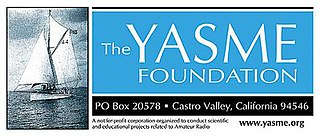
The Yasme Foundation is a non-profit corporation organized to conduct scientific and educational projects related to amateur radio, including DXing and the introduction and promotion of amateur radio in underdeveloped countries. It is located in Castro Valley, California.
The 630-meter amateur radio band is a frequency band allocated by the International Telecommunication Union (ITU) to amateur radio operators, and it ranges from 472–479 kHz, or equivalently 625.9–635.1 meters wavelength. It was formally allocated to amateurs at the 2012 World Radiocommunication Conference (WRC-12). The band is available on a secondary basis in all ITU regions with the limitation that amateur stations have maximum radiated power of 1 watt effective isotropic radiated power (EIRP); however, stations more than 800 km from certain countries may be permitted to use 5 watts EIRP.
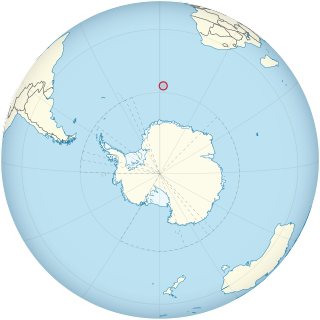
The 3Y0J Bouvet Island DXpedition was an amateur radio event that occurred February 6-13, 2023. The expedition's goals were the same as other DXpeditions: to contact as many amateur radio stations as possible from a remote location.
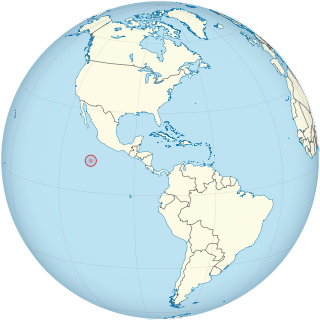
The FO0XB Clipperton Island DXpedition was an amateur radio expedition that took place over two weeks in March and April 1978. The group left from San Diego on March 14, 1978 and was the first DXpedition to Clipperton Island in over 20 years and was the first a few other successful major DXpeditions including FO0XX (1985), FO0CI (1992), FO0AAA (2000), and TX5C (2008). The team was set up with three groups eight French members, six American members, and three Swiss members. The operators attempted to make contacts using the amateur radio satellite Oscar 7. Members of the expedition came from many walks of life including a police officer, medical doctor, teacher, horticulturist, and a judge. Contacts made with members of this expedition are mentioned by some ham radio operators as one of their more sought after and interesting contacts in their collection.

The 3Y5X Bouvet Island DXpedition was an amateur radio event that occurred from December 28, 1989, until January 13, 1990. The expedition had planned to land on Bouvet Island on Christmas Eve but was delayed due to weather, while on the island the operators managed to operate for more than two weeks. Of the contacts made approximately 16,800 were made using CW, 30,000 contacts on SSB, and 291 contacts were made with RTTY.
